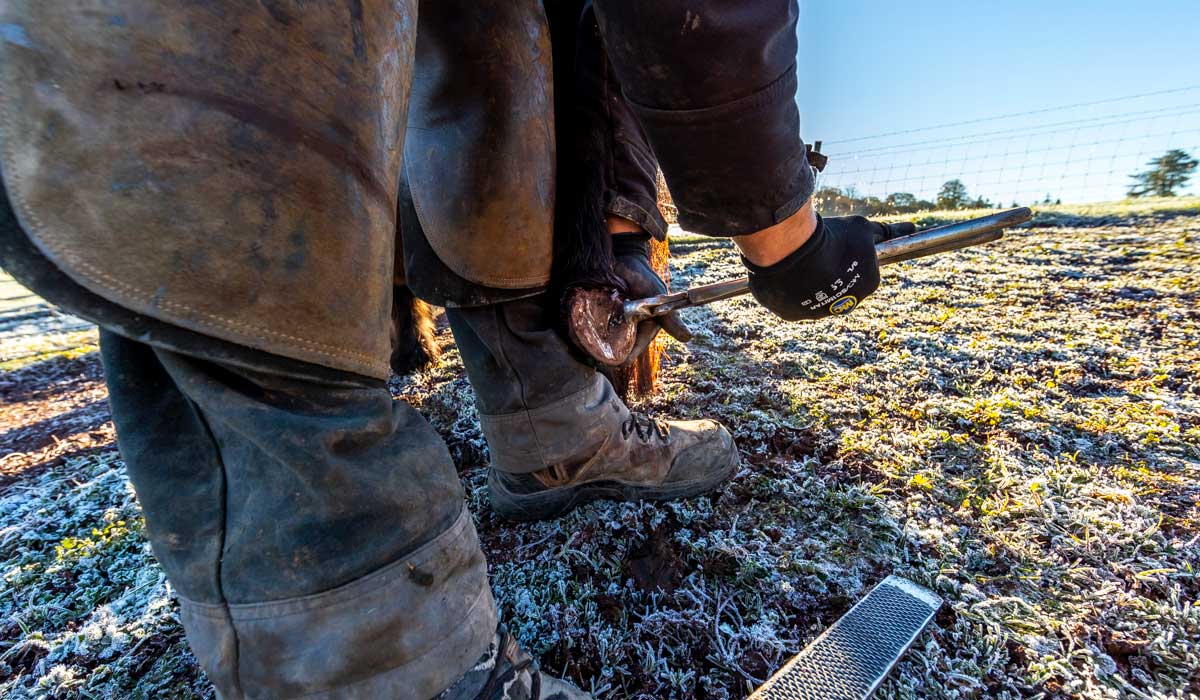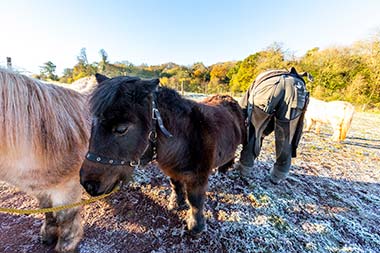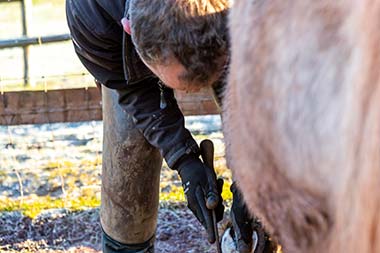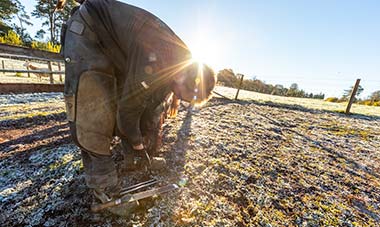
There is an old saying in the equine world, ‘no foot, no horse’, which has remained true ever since the horse was first domesticated thousands of years ago and subsequently used in warfare, agriculture and as a mode of transport.
From thoroughbred racehorses to the hardiest of children’s ponies, foot health is of vital importance. The size and weight of a horse means that the legs and hooves are the most vulnerable area. Having a good farrier who can be trusted to really take care of a horse’s hooves is really important to any horse owner, and we consider our farrier as one of the Puzzlewood team. So, let’s find out a bit more about Harry…
How often do you visit Puzzlewood?
I visit on an 8-week cycle throughout the year. Hooves grow like human nails, so they need to be regularly checked.

Which animals do you visit and why?
I visit Tallulah, Tara and Nero, the three Shetland ponies, and Jasmine and Pippa the donkeys. I give each of them a foot trim, check to make sure their feet are in good health and that there are no ailments or problems that might require treatment. I also keep an eye on their weight because it can impact on their legs and feet. They can all get a bit porky, especially because they have a very relaxed lifestyle grazing in the paddocks – even horses and donkeys need to watch how much they eat from time to time!
Are your equine clients easy to work with?
They can definitely be a bit cheeky at times, but then all horses, ponies and donkeys can be. The odd nibble when I’m bent over a hoof, shifting their weight onto me, forgetting how to lift a leg – it’s all part of the job and I just deal with it.
What do you enjoy most about your work?

I love working with animals and I love being outdoors – preferably when it’s dry and sunny. Unfortunately, good weather is never guaranteed!
How long have you been a farrier?
I've became a fully qualified farrier back in 2011 and before then did a four-year apprenticeship. There is a lot more to being a farrier than nailing shoes onto hooves – the training is extensive and you need an in-depth understanding of anatomy.
What made you want to be a farrier?
Well, it was perhaps a slightly odd career choice for someone who had no experience with horses. But I was good at metalwork and grew up around farm animals – these two things led me to farriery and a pre-farrier course at Herefordshire College.
We think you’re excellent at your job and a little birdy tells us that your skill has been recognised…
Yes, I like entering farriery competitions and I’ve done okay. I’ve also been very proud to represent Wales both as an apprentice and senior farrier in competition.
What is a typical day for you?

Allowing for travel between clients, I usually make up to five or six visits every day – it really depends on how many animals I’m seeing at each appointment and what needs to be done.
Farriery requires precision and concentration, so I like to keep shoeing to a maximum of five animals per day and 2-3 trims.







